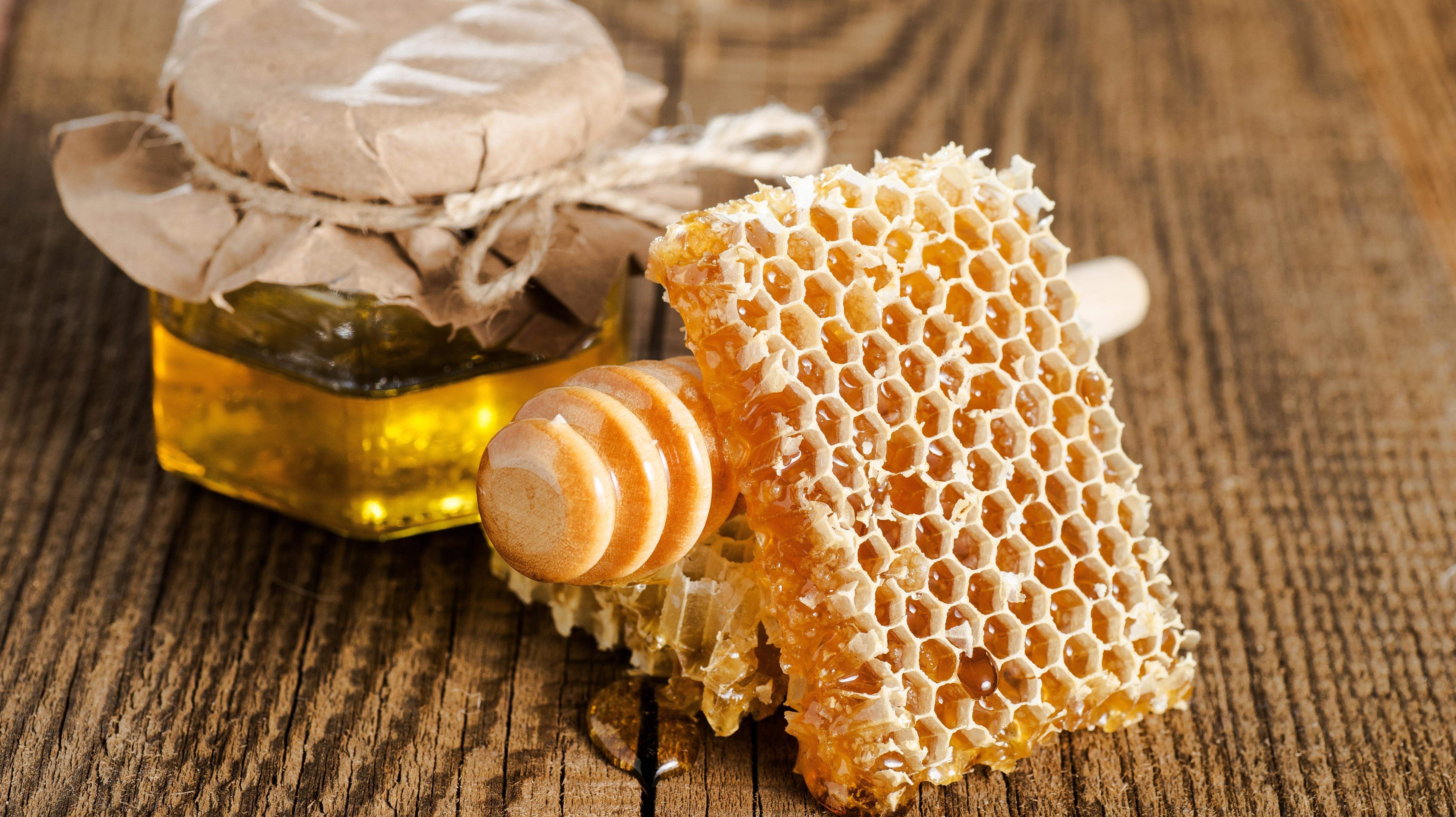What Is Raw Honey, Exactly?
You won't bee-lieve just how complicated honey can be.
Honey is a nearly perfect substance without any input from humans whatsoever, but somehow we've still managed to fancy it up, complicate it, and create confusion as to what exactly we're drizzling into our tea. The bees are not to blame, of course; it's the fault of the people who stand to profit from honey misinformation.
Take, for example, the concept of "raw honey" versus the run-of-the-mill grocery store honey. BEE&YOU, a brand specializing in bee products, sells its raw honey for a whopping $19.99 a jar. Not to downplay the work of beekeepers and honey makers, but at 20 bucks a jar the term "liquid gold" better be literal and not figurative.
Or is that simply the cost of getting the "real" stuff? The brand's Wildflower Raw Honey and Pine Raw Honeydew Honey are promoted as "pure, raw, and unprocessed, rich in antioxidants, pesticide-free, gluten-free, and non-GMO." Does that mean the bear-shaped bottle of honey I bought at Aldi is processed, riddled with gluten, devoid of antioxidants, and laced with pesticides? It's time to decode the marketing terms that get hurled around with honey.
How honey is made
The process by which honey is made is fairly simple: Bees fly around to flowers collecting nectar, which is then deposited into honeycombs (the structures inside hives, where the bees live). The fanning of their wings is what helps to evaporate the water in the nectar and transform it into the honey we recognize and crave.
Where honey varieties differ depends mainly on the flower from which the bees take the nectar. This is how we end up with different honey varieties like Manuka, Forest, or Acacia honey.
Raw honey vs. pasteurized honey vs. pure honey
Although the main difference between honey varieties is the nectar from which they're produced, there are also some human interventions that can alter the honey.
Raw honey goes straight from honeycomb to jar with no other processes in between. The honey might be filtered to ensure people don't get jars that contain bits of pollen, honeycomb debris, or dead bees, but it's otherwise untouched.
Regular honey, or pasteurized honey, is heated to high temperatures and sometimes filtered multiple times. This process is done to extend the shelf life of the honey and to make it generally more transparent-looking. Added sweeteners and corn syrup can also be mixed into regular honey to make it last longer. By contrast, "pure" honey has been pasteurized, but does not contain any additives.
Before you scold me for my "unhealthy" teddy bear honey, take note that the ingredients listed on the label are honey alone, nothing else. Plus, as Medical News Today notes, "There are no definitive studies that confirm whether raw honey is better for a person's health than regular or pasteurized honey."
The National Honey Board conducted a study in 2012 analyzing the vitamins, minerals, and antioxidant levels in both raw and processed honey. The study found that processing reduced pollen levels of honey, but did not affect the nutrient content or antioxidants.
So, back to this idea of "pure, raw, unprocessed, rich in antioxidants, and gluten-free" honey. Well, all honey is gluten-free, so my teddy bear honey priced well under $20 stands strong in that category. And we've established that, processed or not, your honey contains antioxidants. Finally, "raw" and "unprocessed" are basically just synonyms. The word "pure" brings about a contradiction, since technically it can still be pasteurized—and thus, processed.
Raw honey can be great, but it's not always the gold standard. Other types are just fine for the vast majority of uses, and no less healthy (unless perhaps they contain corn syrup—check the label). The best reason to pay more for honey is if the beekeepers are practicing humane, earth-friendly techniques; don't feel pressured to break the bank by an expensive, unethical brand's scare tactics.
